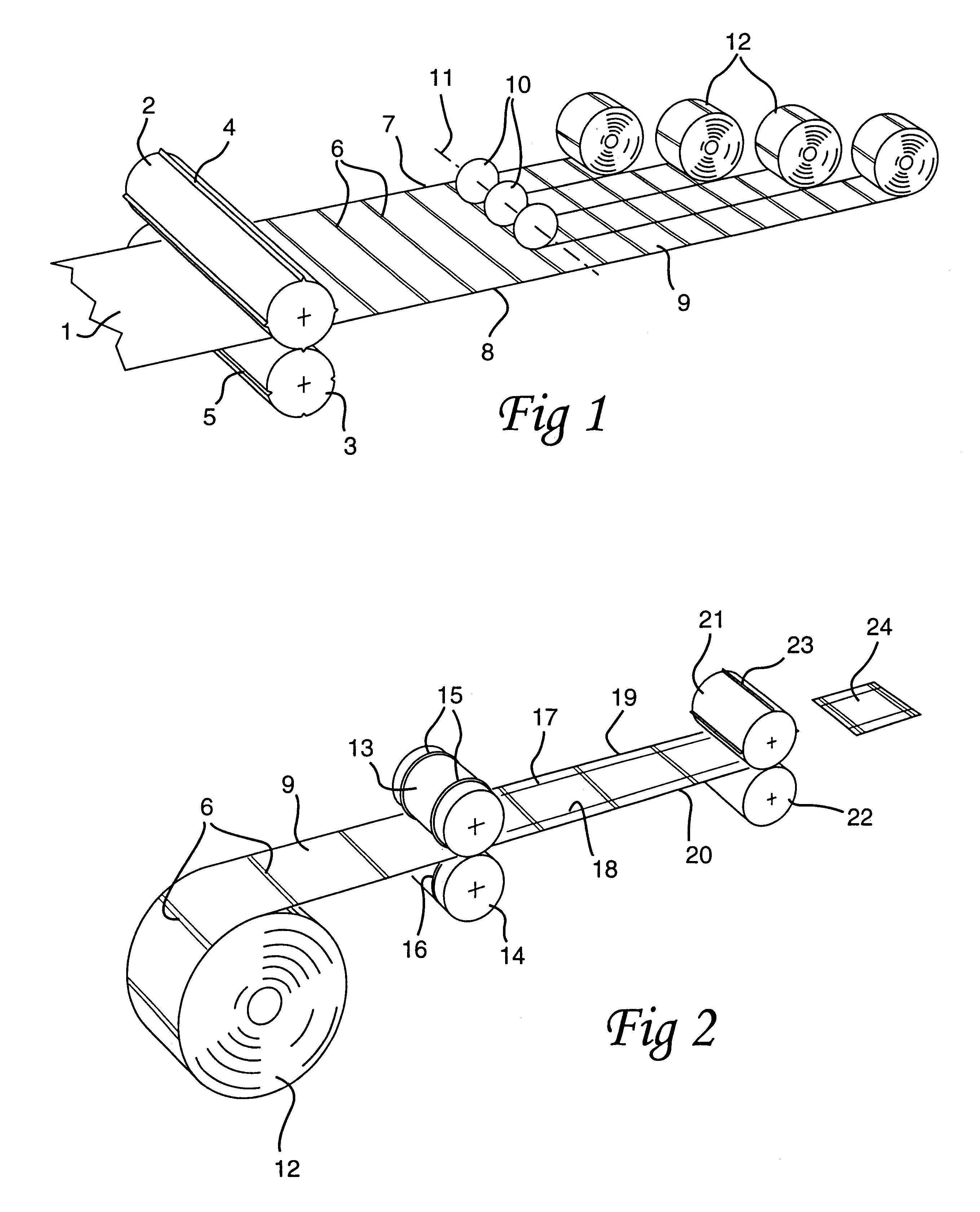Method of producing crease-lined packaging material
a packaging material and crease technology, applied in the field of crease-lined packaging materials, can solve the problems of affecting the production of packaging containers, and reducing the accuracy of spacing variations, so as to reduce the tolerance limits of spacing variations and control the weakening of materials
- Summary
- Abstract
- Description
- Claims
- Application Information
AI Technical Summary
Benefits of technology
Problems solved by technology
Method used
Image
Examples
Embodiment Construction
FIG. 1 shows a part of the production cycle for a laminated, web-shaped packaging material. The packaging material is of per se known type and comprises, for example, a central carrier layer of fibrous material, preferably paper, which is coated on either side with liquid-tight layers of thermoplastic material, for example polyethylene. The packaging laminate may, as required, include further layers, for example a gas barrier layer such as aluminium foil or other layers to impart to the overall packaging laminate the desired properties.
The major part of the production method for a packaging laminate of this type is known in the art and will not be described in greater detail in this context. However, it should be noted that the production takes as its point of departure a wide, web-shaped material web of fibrous material which is to form the carrier layer of the laminate. The paper web is supplied from a paper mill and is provided, in the packaging material production, with the oute...
PUM
| Property | Measurement | Unit |
|---|---|---|
| angle | aaaaa | aaaaa |
| storage time | aaaaa | aaaaa |
| speed | aaaaa | aaaaa |
Abstract
Description
Claims
Application Information
 Login to View More
Login to View More - R&D
- Intellectual Property
- Life Sciences
- Materials
- Tech Scout
- Unparalleled Data Quality
- Higher Quality Content
- 60% Fewer Hallucinations
Browse by: Latest US Patents, China's latest patents, Technical Efficacy Thesaurus, Application Domain, Technology Topic, Popular Technical Reports.
© 2025 PatSnap. All rights reserved.Legal|Privacy policy|Modern Slavery Act Transparency Statement|Sitemap|About US| Contact US: help@patsnap.com


